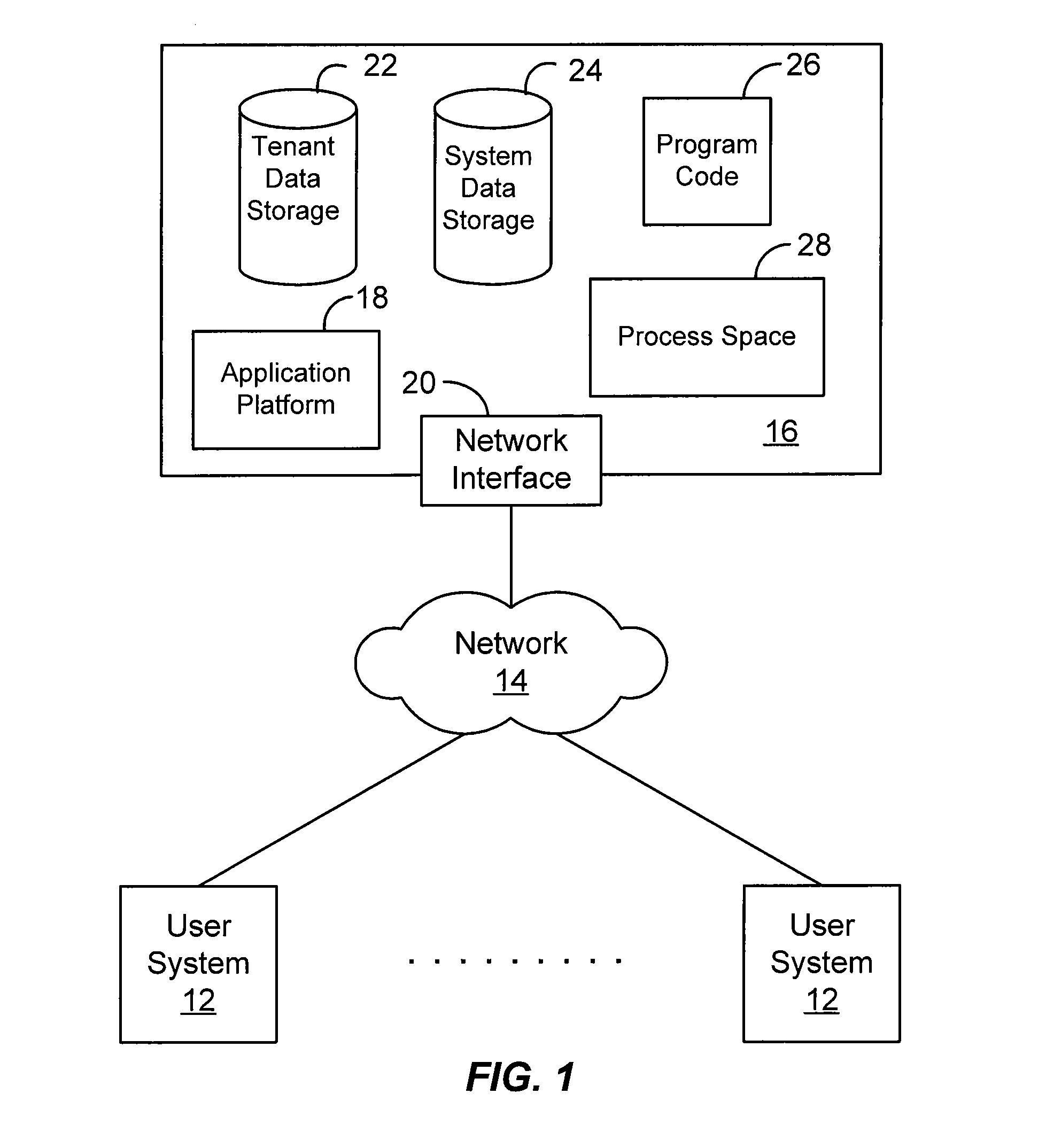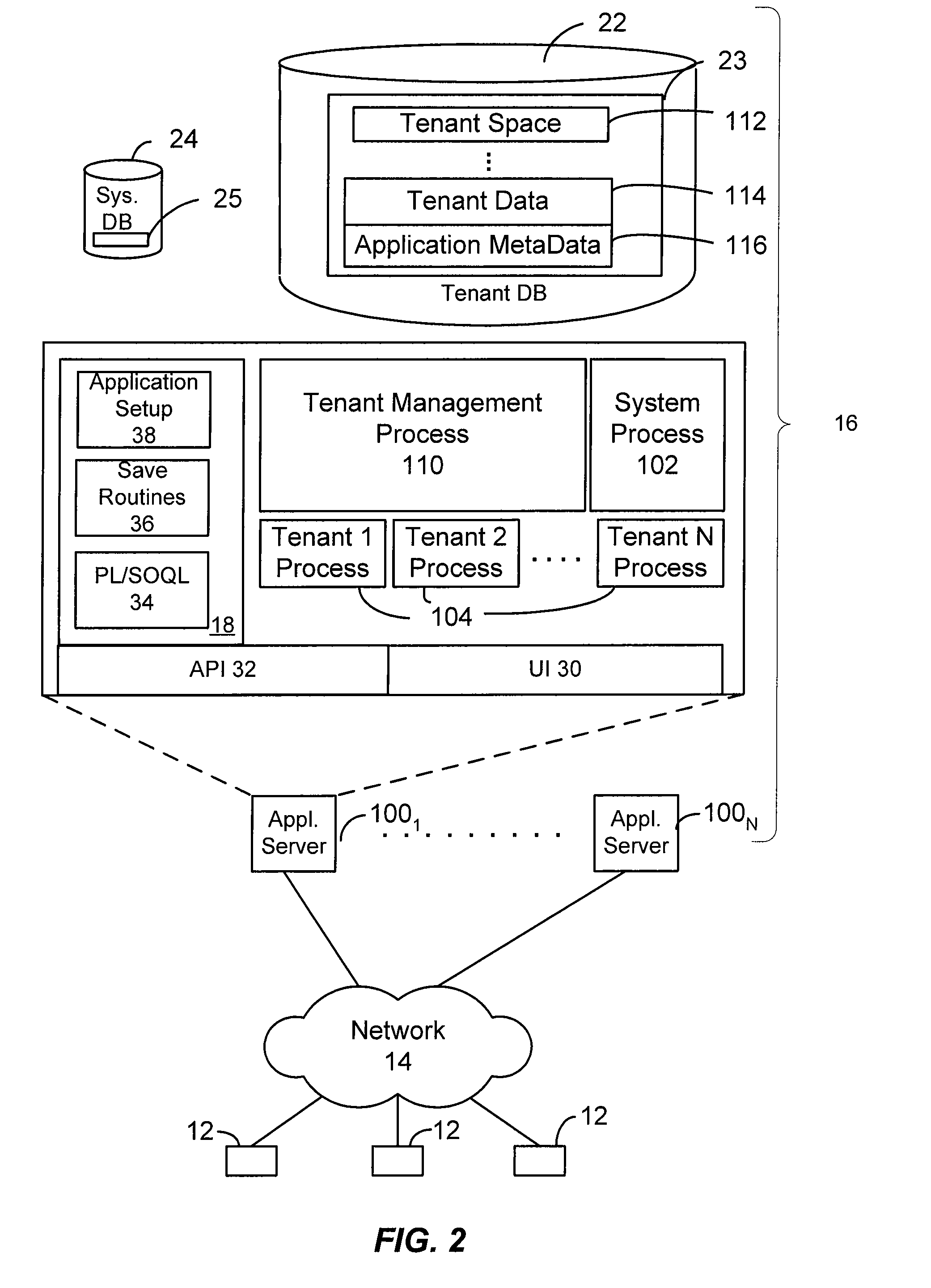Systems and methods for implementing many object to object relationships in a multi-tenant environment
a multi-tenant environment and object-to-object technology, applied in the field of database systems, can solve the problems of arbitrary limit on the number of relationships per entity, unfavorable data object representation in conventional database tables, and unwieldy storage in conventional row-column format of conventional databases, so as to achieve the effect of improving performan
- Summary
- Abstract
- Description
- Claims
- Application Information
AI Technical Summary
Benefits of technology
Problems solved by technology
Method used
Image
Examples
Embodiment Construction
[0017]The present invention provides systems and methods for implementing many object to object relationships in a database system. In one aspect, the methods and mechanisms described herein are implemented in the context of a multi-tenant on-demand database service to provide many object to object relationship management to users of such a service, however such multi-tenant, on-demand architecture is not necessary to practice the claimed embodiments.
[0018]As used herein, the term multi-tenant database system refers to those systems in which various elements of hardware and software of the database system may be shared by one or more organizations (or “tenants”). For example, a given application server may simultaneously process requests for a great number of organizations, and a given database table may store rows for a potentially much greater number of organizations.
[0019]In embodiments, there is provided a mechanism of extension called “Custom Objects” where an organization can ...
PUM
 Login to View More
Login to View More Abstract
Description
Claims
Application Information
 Login to View More
Login to View More - R&D
- Intellectual Property
- Life Sciences
- Materials
- Tech Scout
- Unparalleled Data Quality
- Higher Quality Content
- 60% Fewer Hallucinations
Browse by: Latest US Patents, China's latest patents, Technical Efficacy Thesaurus, Application Domain, Technology Topic, Popular Technical Reports.
© 2025 PatSnap. All rights reserved.Legal|Privacy policy|Modern Slavery Act Transparency Statement|Sitemap|About US| Contact US: help@patsnap.com



